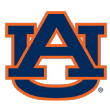Ernest Hemingway was a Nobel Prize-winning writer, but I am convinced he also would have been a brilliant college basketball bracketologist, a March Madness maven, a pioneer in the art of prediction, because of this quote:
"The best way to find out if you can trust somebody is to trust them."
Hemingway implies we need to trust what we see. He's speaking in generalities, but in our application, we have the benefit of hindsight. We've put in the work ... so who can you trust to make your Sweet 16?
That quick turnaround from Thursday/Friday to Saturday/Sunday results in us often seeing two versions of the same team. Sometimes the fatigue results in major upsets. Other times, the strong teams gain even more of an edge. But how do we know which teams will thrive or fail in this spot?
It comes down to efficiency.
When picking a team to win at least two games, you need to hone in on its ability to score in an efficient manner. Last season, that meant the free throw line. In the first round, teams with a better season FT% went 20-12, a strong showing, no doubt. But in the round of 32? The team with the edge in FT% for the season went 13-3. Easy points. Take them.
Efficiency in a different form shined bright in 2018, a year in which the team with the better season eFG% (effective field goal percentage, a stat that adjusts for the increase in value that results from a made 3 vs. a 2) went 18-14 in the first two days and 12-4 the next two days.
The moral of the story: The most repeatable trait is efficiency. Be it from the line or in the flow of offense, teams that excel at scoring in an efficient manner are a good bet to succeed. So that begs the question, what elite teams are poised for a deep run that includes multiple games on short rest? And what upset specials could be extending their hotel stays into a second week? I'm glad you asked!
The elite

If you're new to this space, I haven't exactly been quiet about my belief in the Bluejays, and it's going to take far more than Sunday's stinker (91-71 loss at St. John's) to sway me. Creighton's top four scorers all clear 74% from the line this season, and with them ranking as a top-20 team in assist-per-possession rate, I am comfortable in them being among the most efficient offenses when it is time to put pen to paper and fill in this year's bracket.

The Flyers lead the nation in eFG% behind, for my money, the best player in the sport in Obi Toppin, but their profile isn't as simple as checking a leaderboard. Notice that Dayton ranks squarely in the middle third in free throw percentage. So why do they make this list? Well, Trey Landers is a capable player, but not a piece that Dayton necessarily relies on late in games or to assume an overly heavy offensive workload on a consistent basis. Removing his struggles from the line (something Dayton could very well do come the waning moments of a tournament game), the next three most impactful offensive Flyers are shooting a tick under 78% from the line this season, a rate that certainly elicits confidence when filling out a bracket.
The sleepers

There is one team (one!) in Joe Lunardi's latest bracket that ranks among the top 15 teams in his field in FT%, eFG% and rebound rate. Yes, the latter wasn't mentioned in the intro, but doesn't it stand to reason that you'd like to get your efficient offense the ball? Obviously, their level of competition isn't as high as others, but these Panthers have the statistical profile of a squad that can pull off not one, but potentially multiple upsets in a few weeks.

Forget tourney-bound teams. The Spiders rank top 15 in all of D-I in both of these metrics, and with a top-40 mark in KenPom's continuity metric, we are looking at a team capable of winning a close game against anyone in the nation. They need to finish the regular season strong and make some noise in the Atlantic-10 tournament, but if this team gets invited to the dance, don't be shocked if the Spiders compete at the highest level.
The busts

They are a very good team, but they carry efficiency flaws that could result in an early dismissal. In Lunardi's latest bracket projection, the Bears rank in the back half of the qualifiers in both FT% and eFG%, something that could have them sweating in the second round more than you'd like a 1-seed to do. History suggests it is more likely that one 1-seed falls in the first week than not, and with efficient teams like LSU and St. Mary's flirting with that 8/9-seed line, Baylor supporters need to hope for a strong draw and that the Bears' defense can continue to play at an elite level.

As the saying goes, sometimes it is "better to be lucky than good," and while it's a good premise, projecting based on luck is a tough sell. Yes, Auburn has won 24 of 29 games, but it continually plays nip-and-tuck games (five overtime sessions in a five-game stretch), and that's in part because of the Tigers' inability to score efficiently at a consistent rate, which allows opposing teams to stay close. In the current field, Auburn ranks in the bottom 15 in both of the metrics, and there is no shortage of talent on the double-digit seed lines at the moment. Auburn needs to change things in a hurry if it wants to win one tournament game, let alone play into the second week.
With Champ Week nearly upon us, there is still time for some of these numbers to change, and, of course, the tournament itself is all about draw. That said, this trend could be quite impactful in 2020. And these six teams could prove a point.
